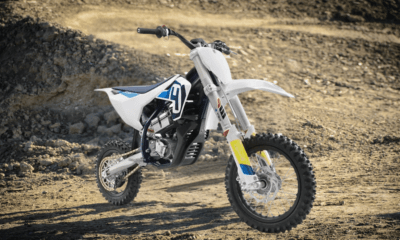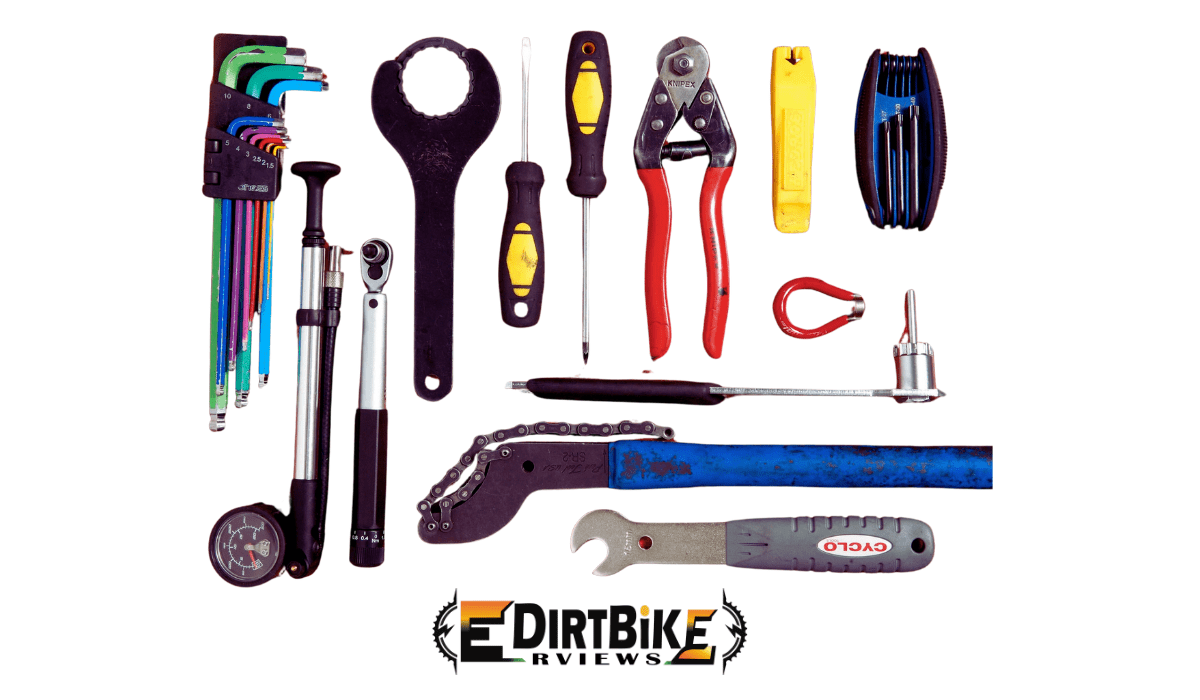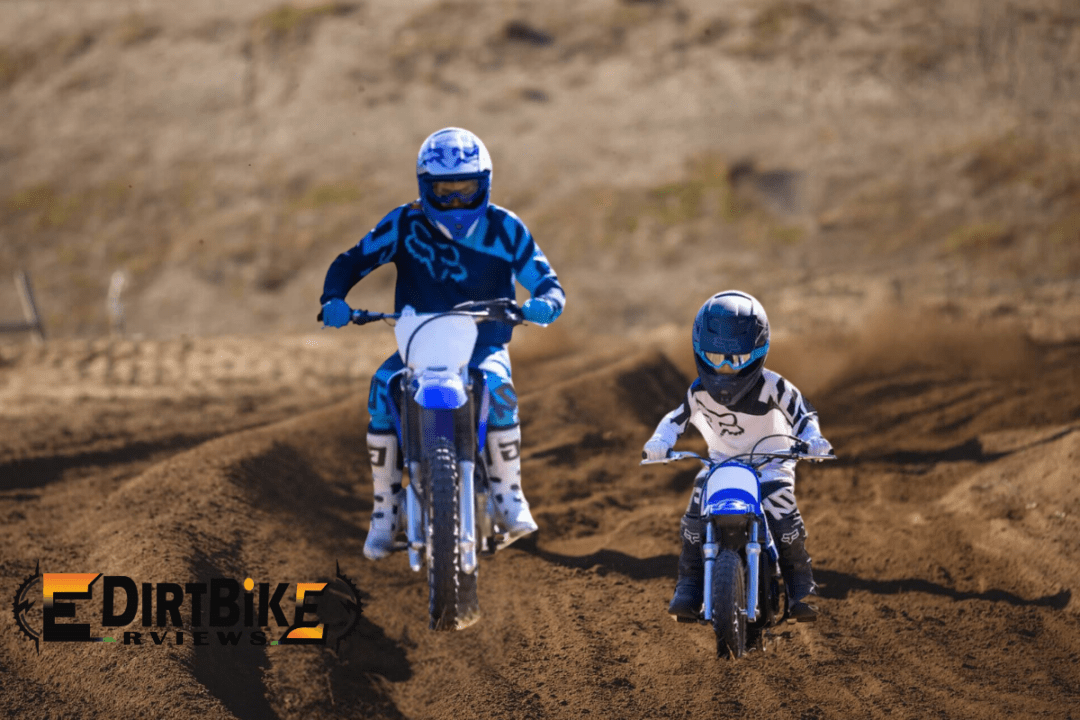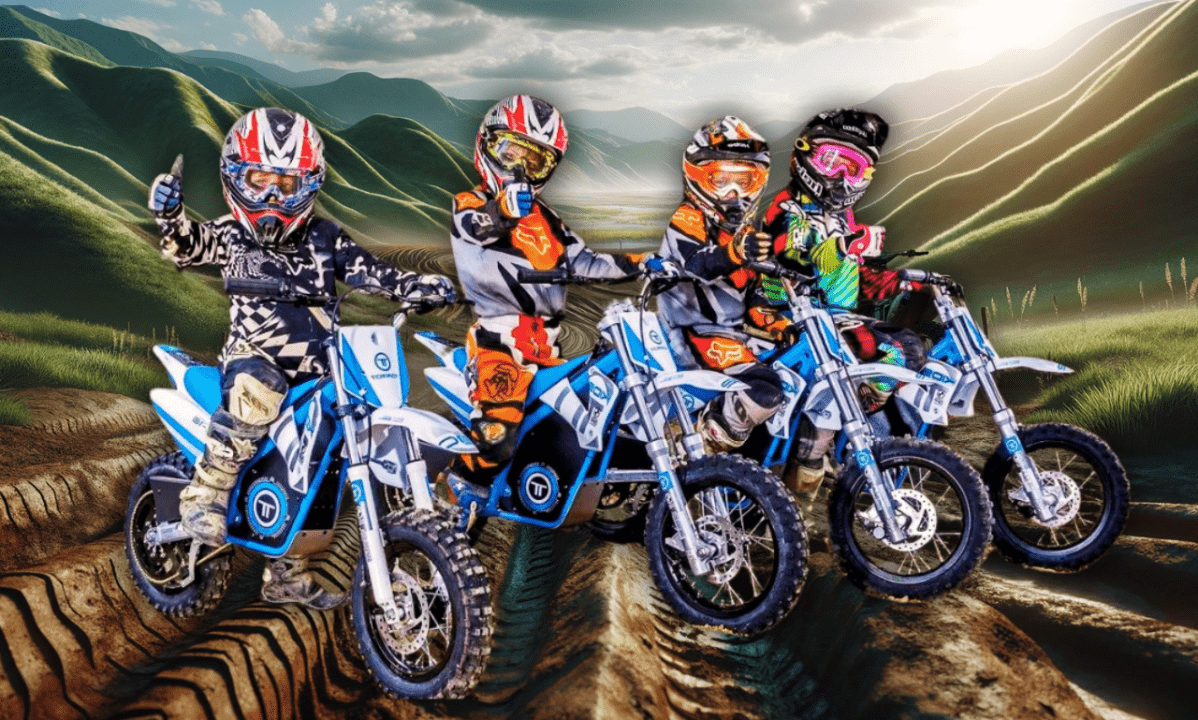E-Bike Tips & Guides
How to Teach Your Child to Ride a Dirt Bike: A Step-by-Step Guide
Discover the steps How to Teach Your Child to Ride a Dirt Bike. Expert tips and safety advice for a fun and successful learning experience.
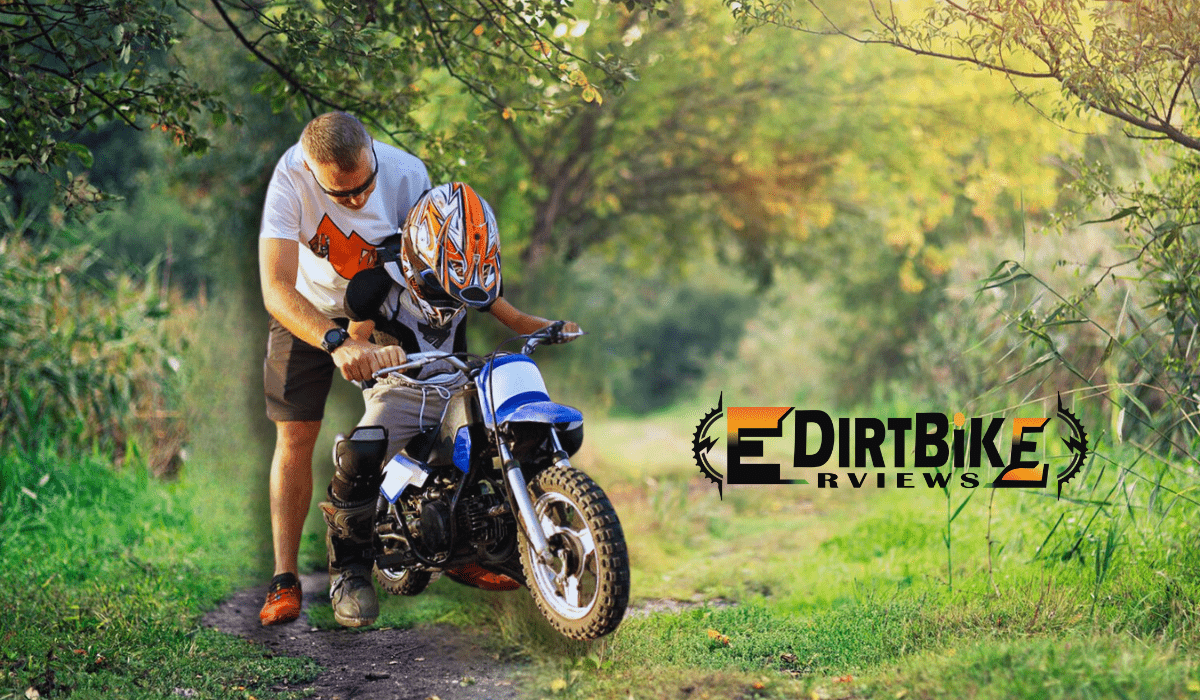
Riding a dirt bike is an exhilarating and valuable experience for a child. It’s not just about mastering the mechanics of the bike; it involves building confidence, improving coordination, and understanding the importance of safety. This comprehensive guide will walk you through the essential steps to confidently teach your child to ride a dirt bike.
This guide is tailored for individuals seeking information, reviews, guides, or tips on teaching children to ride dirt bikes. From selecting the right equipment to mastering the basics of dirt biking, we’ll cover everything you need to know to ensure a fun and safe learning experience for your child. With expert tips and a focus on safety, you’ll be well-equipped to support your child through this exciting journey.
Let’s embark on this adventure together, ensuring that your child’s experience on a dirt bike is enjoyable and filled with valuable lessons and memorable moments.
Table of Contents
Understanding the Basics of Dirt Biking
What is Dirt Biking?
Dirt biking is a popular outdoor activity that involves riding a lightweight motorcycle designed for use on rough terrain, such as dirt trails and hilly areas. Unlike standard motorcycles, dirt bikes are smaller, more agile, and built with specialized tires and suspension systems to handle jumps, bumps, and various off-road conditions. This sport is about speed and agility and the rider’s skill in navigating challenging terrains.
Benefits of Dirt Biking for Children
Engaging children in dirt biking can have several positive impacts on their development:
- Physical Fitness: Dirt biking is a physically demanding activity. It requires strength, endurance, and good motor coordination. Regular practice can enhance a child’s physical fitness, balance, and hand-eye coordination.
- Mental Sharpness: Navigating different terrains requires quick thinking and decision-making skills. Dirt biking helps in improving concentration, problem-solving abilities, and mental alertness.
- Confidence and Self-Esteem: Learning and mastering new skills on a dirt bike can significantly boost a child’s confidence and self-esteem. The sense of accomplishment they get from overcoming obstacles and improving their riding skills is invaluable.
- Respect for Safety: Dirt biking teaches children the importance of safety and following rules. Wearing protective gear and learning to ride responsibly inculcates a sense of discipline and caution.
- Appreciation for Nature: Dirt biking often takes place outdoors, which can foster a child’s love and appreciation for nature and the environment.
- Social Interaction: Being part of a community of riders can provide a sense of belonging and encourage healthy social interactions. It allows children to connect with others who share similar interests.
As we delve into the next section, “Preparing for the Ride,” remember that understanding these basics is crucial. This knowledge helps in choosing the right equipment and setting the right expectations and goals for your child’s dirt biking journey. Let’s gear up and learn how to prepare your child for their first ride!
Preparing for the Ride
Choosing the right dirt bike for your child is crucial for their safety and enjoyment. Here are vital factors to consider:
- Size and Fit: The bike should be the right size for your child. They should be able to touch the ground with both feet when seated on the bike, ensuring stability and control.
- Engine Size: For beginners, a bike with a smaller engine (50cc to 125cc) is advisable. These bikes are easier to handle and ideal for learning.
- Weight: A lighter bike is easier for a child to manage. Ensure the bike’s weight is appropriate for your child’s age and strength.
- Age and Experience: Consider your child’s age and riding experience. Younger or less experienced riders may benefit from a bike with less power and more safety features.
Essential Safety Gear
Safety gear is non-negotiable. Equip your child with the following:
- Helmet: A well-fitting, quality helmet is the most critical piece of safety gear.
- Goggles: Protect your child’s eyes from dust, mud, and debris.
- Gloves: For grip and hand protection.
- Boots: Specialized dirt biking boots protect against leg and ankle injuries.
- Body Armor: A jacket or vest designed for motocross to protect against falls and impacts.
Choosing a Suitable Location
Selecting a safe and appropriate location for learning is essential:
- Flat, Open Area: Start in a flat, open space away from traffic and obstacles.
- Dirt Tracks: After mastering basic skills, practice on designated dirt tracks to experience varied terrains.
- Legal Considerations: Ensure the area allows dirt biking and adhere to local regulations.
In the next section, “Fundamentals of Riding,” we will explore how your child can get familiar with their dirt bike and understand its basic controls. It’s about laying the groundwork for a safe and enjoyable riding experience. Let’s get ready to turn those engines on!
Fundamentals of Riding
Before your child starts riding, they need to become comfortable with their dirt bike. Here’s how to begin:
- Introduce the Parts: Show them the essential parts of the bike – the handlebars, brakes, throttle, clutch (if applicable), gear shifter, and foot pegs.
- Sitting Correctly: Teach them the right way to sit – upright, with knees gripping the tank and feet positioned firmly on the foot pegs.
- Mounting and Dismounting: Practice getting on and off the bike safely, ensuring they understand how to balance the weight.
Basic Controls and Their Functions
Understanding the controls is fundamental:
- Throttle Control: Explain how to use the throttle to increase and decrease speed smoothly.
- Braking: Teach them about both front and rear brakes. Emphasize the importance of using brakes gently and effectively.
- Clutch and Gearing: For bikes with a clutch, explain how it works with the gear shifter to change gears.
- Balance and Steering: Demonstrate how to steer the bike and maintain balance, starting at low speeds.
The initial focus should be on these basics without rushing into more complex maneuvers. This foundation is essential for building confidence and ensuring safety as they progress.
Teaching Techniques
Step-by-Step Approach to Teaching
Patience and a systematic approach are key when teaching your child to ride a dirt bike. Here’s a step-by-step method:
- Start with the Basics: Begin with stationary exercises, like sitting correctly, using the throttle, and applying brakes.
- Engine Familiarization: Let them start the engine and get used to the sound and feel. Practice gentle throttle control while stationary.
- Moving Forward: Initially, focus on straight-line riding at a slow speed. Teach them to start, move forward a few feet, and then stop gently.
- Turning and Steering: Introduce gentle turns once they are comfortable with straight lines. Start with wide arcs and gradually decrease the turning radius.
Balancing and Steering Skills
- Static Balancing: Practice balancing the bike without moving. This builds confidence in handling the bike.
- Dynamic Balancing: As they ride, teach them to shift their weight for better control, especially when turning.
Acceleration and Braking Basics
- Smooth Acceleration: Guide them on using the throttle to accelerate smoothly, avoiding jerky movements.
- Controlled Braking: Emphasize the importance of using front and rear brakes for effective stopping.
Remember, every child learns at their own pace. Celebrate small victories and provide constant encouragement. Safety should always be the priority, so ensure they are comfortable and confident at each step before moving on to the next.
Practice Makes Perfect
Structuring Practice Sessions
Effective practice is essential for skill development in dirt biking. Here’s how to structure practice sessions:
- Regular Short Sessions: Instead of lengthy, infrequent sessions, opt for shorter, more regular practice times. This helps maintain focus and prevents fatigue.
- Set Achievable Goals: Each session should have a clear, attainable goal, whether mastering a new skill or improving an existing one.
- Vary the Terrain: As skills improve, introduce different terrains and challenges to keep the learning process engaging and dynamic.
Monitoring Progress and Providing Feedback
Keeping track of your child’s progress and offering feedback is crucial:
- Observe and Note Improvements: Watch their riding closely, noting improvements and areas needing more work.
- Positive Reinforcement: Always start with what they’re doing well before moving on to what can be improved.
- Constructive Criticism: Offer feedback in a way that’s constructive and supportive. Avoid overwhelming them with too many corrections at once.
- Encourage Self-Assessment: Encourage your child to assess their performance. This promotes self-awareness and responsibility for their learning.
Regular practice and constructive feedback are instrumental in building your child’s dirt biking skills. Remember, progress might be slow at times, but your child will continue to improve with patience and encouragement.
Safety First
Emphasizing Safety Measures
Safety is paramount when it comes to dirt biking, especially for children. Here’s how to emphasize it:
- Wear Protective Gear: Always ensure your child wears the necessary safety gear, including a helmet, goggles, gloves, boots, and body armor.
- Pre-Ride Checks: Teach your child to perform pre-ride checks. This includes checking the bike’s tire pressure, brakes, and chain.
- Ride Within Limits: Encourage them to ride within their skill level and not attempt maneuvers that are too advanced.
- Awareness of Surroundings: Instill the importance of being aware of their surroundings, including other riders, obstacles, and terrain changes.
Handling Emergencies and Falls
Knowing how to handle emergencies and falls is crucial:
- Fall Safely: Teach your child how to fall in a way that minimizes injury. They should learn to keep their arms in and roll away from the bike.
- First Aid Basics: Familiarize them with basic first aid for minor injuries.
- Emergency Protocols: Make sure they know what to do in an emergency, including how to call for help.
- Stay Calm and Assess: Teach them to stay calm, assess their condition, and check the bike’s condition before continuing to ride.
Safety education is an ongoing process in dirt biking. Constant reinforcement of these measures will help your child develop a safety-first mindset, essential for a responsible and enjoyable riding experience.
Encouraging Confidence and Independence
Confidence is a key component in mastering dirt biking. Here’s how to build it:
- Celebrate Small Achievements: Acknowledge and celebrate even small milestones. This reinforces a sense of accomplishment.
- Positive Encouragement: Use positive reinforcement to boost their morale. Focus on their strengths and how they are improving.
- Allow Self-Discovery: Give them the space to explore and learn at their own pace. This helps in developing self-reliance and decision-making skills.
- Provide Support, Not Pressure: Be supportive without putting undue pressure on them to perform. The focus should be on enjoying the process, not just the outcome.
Gradually Increasing Difficulty Levels
As confidence grows, gradually introduce new challenges:
- Progressive Learning: Start with simple tasks and progressively introduce more complex skills as they become more confident.
- New Terrains and Challenges: Introduce different terrains and slight obstacles to help them adapt to various riding conditions.
- Setting New Goals: Encourage them to set new, slightly more challenging goals. This keeps the learning process exciting and rewarding.
- Encourage Independence: As they become more skilled, step back and allow them more independence. This could mean letting them lead on familiar trails or make route decisions.
By fostering confidence and independence, you’re not just teaching your child to ride a dirt bike but also teaching valuable life skills. This balance of nurturing yet challenging will help your child not only in dirt biking but in other areas of life as well.
Maintaining the Dirt Bike
Teaching your child essential maintenance and care of their dirt bike is crucial. Here are the key aspects:
- Regular Cleaning: The bike should be cleaned after each ride to remove dirt and debris. This prevents rust and wear.
- Chain Maintenance: Teach them to check and lubricate the chain to ensure smooth riding regularly.
- Checking Tire Pressure: Proper tire pressure is vital for safe riding. Show them how to check and adjust it as needed.
- Inspecting Brakes and Cables: Regularly inspect brakes and cables for wear and proper functioning. Teach them to recognize signs that these parts need attention.
- Engine Care: For older children, introduce primary engine care, like checking oil levels and understanding when a professional service might be needed.
Teaching Responsibility and Bike Upkeep
Involving your child in the maintenance process teaches responsibility:
- Create a Maintenance Schedule: Develop a simple schedule and involve your child in these routine checks.
- Educational Experience: Use maintenance time as an educational experience, explaining the function of different parts and why care is essential.
- Responsibility for Equipment: Encourage them to be responsible for their gear, including cleaning and storing it properly.
- Problem Recognition: Teach them to recognize common issues or when to seek help from an adult or a professional.
By involving your child in the maintenance of their dirt bike, you are teaching them how to care for their equipment and instilling a sense of ownership and responsibility. This knowledge is invaluable and contributes to their overall growth as a rider and an individual.
Personal Opinion
Teaching a child to ride a dirt bike is a journey filled with challenges and rewards. Based on personal experiences and observations, here are some insights:
- Patience is Key: Every child learns at their own pace. It’s essential to be patient and understand that progress may be gradual. Celebrate the small victories along the way.
- Safety Over Everything: I cannot emphasize the importance of safety. Instilling a safety-first attitude in your child is crucial. It’s not just about wearing the right gear but also about riding responsibly.
- The Bonding Experience: Teaching your child to ride can be a wonderful bonding experience. It’s a shared adventure that can bring you closer, creating memories that last a lifetime.
- Empowering, Not Overbearing: While it’s natural to want to protect your child, it’s also important to step back and let them learn from their experiences. Empowering them to make decisions and learn from minor mistakes is vital for their growth.
- Encourage Exploration: Once they’re confident, encourage exploration. Let them try new trails and challenges. This not only improves their skills but also their love for the sport.
- Fun Should Be the Focus: Lastly, the primary goal should always be to have fun. If they’re not enjoying it, it’s time to step back and reassess.
From personal experience, the journey of teaching a child to ride a dirt bike is as rewarding for the teacher as it is for the student. It’s about more than just riding; it’s about teaching life skills, responsibility, and the joy of outdoor sports.
Conclusion
In conclusion, teaching your child to ride a dirt bike can be an immensely fulfilling experience. By focusing on safety, proper technique, and regular practice, you can help your child develop as a rider and a responsible and confident individual. Remember to keep the learning process fun, safe, and engaging.
We hope this guide has provided valuable insights and practical tips for those embarking on this exciting journey. Whether for leisure or aspiring towards competitive riding, the skills and memories your child acquires through dirt biking will be cherished for years.
Happy riding, and may this adventure bring you and your child joy and learning!
E-Bike Tips & Guides
Weather Impact on Electric Dirt Biking
Explore the dynamic between electric dirt bikes and varying weather conditions, including how temperature, rain, and terrain affect performance. Learn maintenance and riding tips for optimal biking experience.
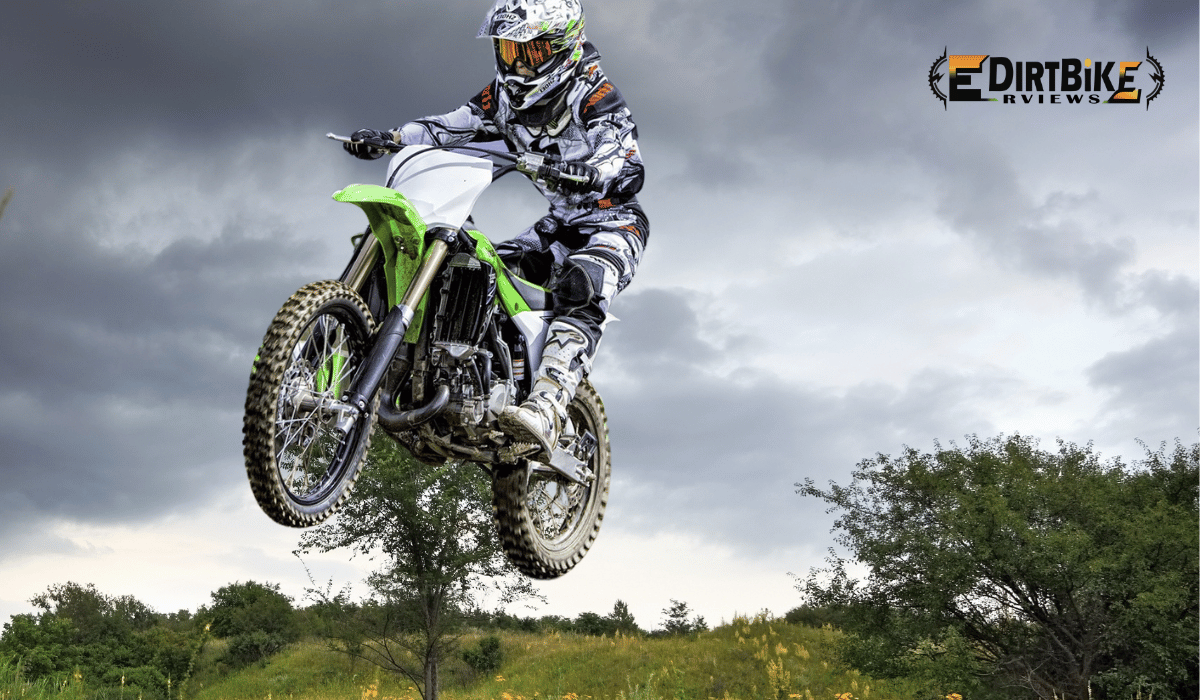

Understanding the impact of weather on electric dirt biking is crucial for both the safety and enjoyment of the rider, as well as for the longevity and performance of the bike. Weather conditions can dramatically affect the riding experience, from altering the bike’s handling and efficiency to challenging the rider’s skills and preparedness. For instance, wet conditions can affect traction and braking, while extreme temperatures can influence battery performance and bike reliability.
Moreover, as electric dirt bikes rely on electrical components and battery systems, they are susceptible to weather-related challenges unique to traditional bikes. Elements like rain, mud, snow, and extreme temperatures can significantly impact the electrical systems, battery life, and overall bike durability. Therefore, riders need to know how different weather conditions can affect their bike’s performance and how to prepare and respond to these challenges adequately.
Electric dirt biking is an exhilarating sport and a testament to the advancements in sustainable transportation. However, with this innovation comes the need to understand and adapt to how weather can influence the electric dirt biking experience. This knowledge ensures the rider’s safety and enjoyment and the optimal performance and longevity of their electric dirt bike.
Table of Contents
The Influence of Weather on Electric Dirt Bike Performance
Temperature Effects
Temperature fluctuations notably influence the performance of electric dirt bikes. Batteries, the powerhouse of these bikes, are sensitive to extreme temperatures. Battery capacity can decrease in cold conditions, reducing range and power output. The cold can cause the batteries to discharge more quickly and reduce efficiency. Conversely, in sweltering conditions, batteries can overheat, which may lead to thermal throttling, where the system reduces power output to prevent damage. This thermal effect can also accelerate battery degradation over time, affecting the long-term performance and reliability of the bike.
Rain and Water Exposure
Electric dirt bikes, like all electrical systems, have a degree of vulnerability to water. While many modern electric bikes are designed with waterproofing features to withstand typical wet conditions encountered off-road, prolonged exposure to water or riding in heavy rain can still pose risks. Water can penetrate seals and enclosures, potentially damaging the electrical components and battery. Furthermore, wet conditions can affect traction and braking, increasing the risk of accidents. Riders must understand their bike’s water resistance capabilities and take appropriate measures to protect it from excessive water exposure.
Wind Conditions
Wind can also impact the riding experience on an electric dirt bike, though the effects are more indirect than temperature and rain. Strong winds can make riding more challenging, especially in open or exposed areas, by affecting stability and rider control. Crosswinds can push the rider off course, requiring more effort to maintain balance and direction. Additionally, headwinds can cause increased energy consumption as the rider and bike work harder against the wind resistance, potentially reducing the bike’s range.
Terrain and Weather Interplay
The interplay between terrain and weather significantly affects electric dirt bike performance. Varied terrains like mud, sand, and snow can behave differently under various weather conditions, affecting traction and control. For example, mud can become more slippery and challenging to navigate after rain, requiring more power and battery usage to maintain speed and control. Snow and ice can reduce traction, necessitating careful handling to prevent accidents. The bike’s performance on these terrains, influenced by weather conditions, highlights the importance of understanding and adapting to the combined effects of weather and terrain for safe and efficient riding.
In conclusion, the performance of electric dirt bikes is considerably affected by weather conditions, including temperature variations, rain and water exposure, wind, and the complex interaction between terrain and weather. Riders must be aware of these factors and prepare accordingly to ensure their safety and the optimal functioning of their bikes in diverse weather conditions.
Electric Dirt Bike Design for Weather Adaptability
Waterproofing and Water Resistance
Manufacturers of electric dirt bikes prioritize waterproofing and water resistance in their designs to enhance the bikes’ adaptability to various weather conditions. Critical components such as the battery, motor, and control systems are encased in waterproof or water-resistant housings to prevent moisture ingress. Seals and gaskets are employed at junctures and openings to block water. At the same time, protective coatings on electrical circuits and connectors provide an additional defense against corrosion and short-circuiting. These design features ensure electric dirt bikes can withstand rain and wet terrain exposure, allowing riders to navigate through challenging conditions without compromising the bike’s performance or safety.
Temperature Management Systems
Electric dirt bikes are equipped with temperature management systems to address the challenges posed by temperature extremes. These systems are designed to maintain optimal battery and motor performance in hot and cold conditions. In cold weather, battery management systems (BMS) can include thermal insulation and heating mechanisms to prevent the battery’s temperature from dropping too low, thus preserving its efficiency and range. In contrast, for hot weather conditions, these systems often feature cooling technologies like air or liquid cooling to dissipate excess heat and prevent overheating. By regulating the temperature, these management systems protect the bike’s components, ensuring consistent performance and prolonging the lifespan of the battery and motor.
Durability in Various Weather Conditions
The overall durability of electric dirt bikes in diverse weather conditions is a critical consideration in their design. Materials used in the construction of the bike, such as frames, casings, and external components, are chosen for their strength, corrosion resistance, and ability to withstand environmental stress. This includes using alloys and plastics that resist rust and decay when exposed to moisture, mud, or salt. The design also considers the impact of UV radiation, ensuring that materials do not degrade quickly when exposed to sunlight for prolonged periods. These design choices ensure that electric dirt bikes remain robust and reliable, whether ridden in scorching heat, cold, or during torrential rains.
In conclusion, the design of electric dirt bikes for weather adaptability focuses on waterproofing, temperature management, and overall durability. These features collectively ensure that the bikes can withstand and perform optimally in various weather conditions, providing riders with confidence in the reliability and safety of their electric dirt bikes regardless of the environmental challenges they face.
Riding Strategies in Different Weather Conditions
Tips for Wet Conditions
Riding an electric dirt bike in wet conditions requires careful preparation and technique. Firstly, riders should ensure their bike’s waterproofing is up to standard to prevent water-related damage. When navigating wet terrain, reducing speed and using gentle, smooth inputs for throttle, brakes, and steering can help maintain control and prevent skidding or sliding. Avoiding deep puddles or streams where water could submerge critical components is also essential. Tires with appropriate tread patterns can enhance grip in slippery conditions, and riders should wear waterproof gear to stay dry and focused.
Handling Cold Weather Riding
Cold weather can significantly impact battery performance and rider comfort. Riders should store their electric dirt bike in a temperature-controlled environment to maximize battery life and efficiency when not in use. Pre-warming the battery before riding can also help. On the trail, conserving battery power by maintaining a steady pace and avoiding unnecessary acceleration is wise. Dressing in layers with thermal and windproof clothing will keep the rider warm and reduce the cold’s impact on performance and endurance.
Strategies for Windy Conditions
In windy conditions, the key is to reduce the bike’s profile against the wind and maintain stability. Leaning slightly into the wind can help counteract its force. Riders should be prepared for sudden gusts, keeping a relaxed grip on the handlebars to allow quick adjustments. Reducing speed and avoiding risky maneuvers is also advisable, as wind can unpredictably affect the bike’s path. Choosing routes sheltered from the wind, when possible, can make for a more enjoyable and less exhausting ride.
Adapting to Changing Terrains
Electric dirt bikes must handle a variety of terrains, which can change rapidly with the weather. Riders should be observant and ready to adjust their riding style accordingly. For instance, it may be necessary to shift weight rearward to improve traction in muddy or sandy conditions. On rocky or uneven terrain, standing on the pegs can help absorb shocks and give better control. It’s crucial to continuously assess the terrain and adjust speed, riding position, and bike settings (like suspension and power delivery) to safely and effectively navigate different landscapes.
In conclusion, riding an electric dirt bike in varying weather conditions demands adaptability and skill. By employing strategies tailored to wet, cold, and windy environments and being prepared to adjust to changing terrains, riders can enhance their experience and ensure both their safety and the longevity of their bike.
Maintenance and Care for Electric Dirt Bikes in Varied Climates
Routine Checks and Maintenance
Regular maintenance is essential for electric dirt bikes’ optimal performance and longevity, especially when ridden in varied climates. Routine checks should include inspecting the battery’s charge level and health, ensuring all electrical connections are secure and corrosion-free, and verifying that the motor and controller are functioning correctly. Mechanical components like brakes, suspension, and tires also need regular inspection for wear and proper operation. It’s essential to follow the manufacturer’s recommended service intervals and to promptly address any issues to prevent minor problems from escalating into significant failures.
Post-Ride Care in Adverse Weather
After riding in rain, snow, or dusty conditions, cleaning the bike properly is crucial to remove any debris, moisture, or corrosive substances that could damage its components. Start by gently rinsing the bike to wash away mud and grime, avoiding direct water spray on sensitive electrical parts. To prevent moisture-related issues, dry the bike thoroughly, especially around electrical connections and battery compartments. Lubricating moving parts, such as the chain and suspension pivots, can help protect them from rust and wear. Inspecting the bike for any damage caused by exposure to harsh conditions should be part of the post-ride care routine.
Long-term Storage and Weather Considerations
When storing an electric dirt bike for extended periods, particularly in regions with extreme weather, it’s essential to consider the environment’s impact on the bike’s components. The battery should be stored at a moderate temperature and charged to the level recommended by the manufacturer to maintain its health. The storage area should be dry and free from extreme temperature fluctuations to prevent damage to the bike’s electrical and mechanical systems. Covering the motorcycle with a breathable, waterproof cover can protect it from dust and moisture. Additionally, periodic checks during storage can help ensure that the bike remains in good condition and is ready to perform reliably when next used.
In summary, maintaining and caring for an electric dirt bike in varied climates involves routine checks, diligent post-ride care, and proper storage practices. These efforts help to ensure the bike’s reliability, performance, and longevity, enabling riders to enjoy their electric dirt biking experience in any weather condition.
Personal Insights on Electric Dirt Biking
Unique Experiences and Observations
Having spent considerable time navigating diverse terrains and weather conditions on electric dirt bikes, I’ve observed their remarkable evolution and adaptation to the off-road environment. One standout experience was riding through a dense forest trail after a heavy rainstorm. The silent operation of the electric motor allowed me to immerse fully in the natural surroundings, a stark contrast to the noise of a gas-powered bike. The bike’s instant torque and smooth power delivery were exceptional, providing precise control through slippery sections and over wet leaves, showcasing the synergy between technology and nature.
Expert Opinion on Electric Dirt Bike Performance in Various Weathers
From a performance perspective, electric dirt bikes exhibit unique strengths and vulnerabilities across different weather conditions. I noticed a decreased battery range in cold weather, highlighting the importance of thermal management systems that can maintain battery efficiency. However, the low-end torque of electric motors is a boon in snowy or muddy conditions, offering controlled power output that helps maintain traction.
In wet conditions, the reduced noise and absence of exhaust emissions of electric bikes enhance the riding experience, though the importance of waterproofing becomes evident to protect the electrical components. During hot weather rides, the absence of a heat-emitting engine makes electric dirt bikes more comfortable, though attention must be paid to preventing battery overheating.
Electric dirt bikes also excel in windy conditions, where their lower center of gravity and stable handling inspire rider confidence. The ability to adjust power settings on the fly allows for a tailored riding experience, responding dynamically to the challenges of gusty winds.
In conclusion, my experiences with electric dirt biking have affirmed their potential to transform off-road riding. Their performance in various weather conditions, combined with the environmental benefits, positions them as a compelling choice for the future of the sport. While there are challenges related to weather impacts on battery life and electrical systems, ongoing technological advancements continue to enhance their resilience and capability, making electric dirt bikes increasingly viable and enjoyable under diverse environmental conditions.
Frequently Asked Questions (FAQs)
Does rain affect electric bikes?
Rain can affect electric dirt bikes, especially if they are not waterproofed. Modern electric bikes are generally designed to handle light to moderate rain without damage to the electrical components, thanks to protective casings and seals. However, prolonged exposure to heavy rain or submersion in water can lead to potential risks like short-circuiting or corrosion. It’s essential to check the manufacturer’s guidelines on the bike’s water resistance and take precautions during wet conditions.
How cold is too cold for Ebikes?
Electric dirt bikes can operate in cold weather, but their performance may diminish below freezing (0°C or 32°F). Extreme cold can reduce battery efficiency and capacity, leading to shorter ride times and decreased power. To mitigate cold weather effects, it is advisable to store the bike in a warmer environment when not in use and use thermal insulation for the battery, if available. Generally, temperatures below -10°C (14°F) are challenging for electric bikes and could warrant special considerations for battery care and bike operation.
Do electric bikes work in the snow?
Yes, electric dirt bikes can work in the snow, provided they have the appropriate tires and the rider has the necessary skills. The key is to maintain traction and control in slippery conditions. Fat tires with deep treads benefit snow riding, providing better grip. However, extreme cold and wet conditions can affect battery performance and risk damage to the electrical system, so it’s crucial to ensure the bike is suitably equipped and maintained for snowy conditions.
Can heat affect electric dirt bike performance?
Yes, high temperatures can cause the battery to overheat, reducing efficiency and potential damage. Cooling systems and proper thermal management are essential to maintaining performance in hot weather.
Are electric dirt bikes suitable for all seasons?
Electric dirt bikes can be ideal for all seasons, but their performance and maintenance needs vary with the weather. Riders must adapt to seasonal conditions, ensuring their motorcycle is appropriately prepared and maintained for optimal performance year-round.
How can I protect my electric dirt bike from weather-related wear and tear?
Regular maintenance, proper storage, and using weather-appropriate protective gear for your bike, such as covers and guards, can help protect it from weather-related wear and tear. Following the manufacturer’s guidelines for care and maintenance is also crucial.
These FAQs underscore the importance of understanding the interplay between weather conditions and electric dirt bike performance. They emphasize proper preparation and maintenance to ensure a safe and enjoyable riding experience.
Conclusion
Throughout this comprehensive exploration, we have delved into the significant impact of weather conditions on electric dirt biking, scrutinizing how elements like temperature, rain, wind, and terrain interact with these innovative machines. We’ve learned that electric dirt bikes are designed with weather adaptability in mind, featuring waterproofing, temperature management systems, and robust durability. However, they still require mindful riding strategies and maintenance to navigate varied climates successfully.
Electric dirt bikes offer a sustainable and exhilarating off-road experience, with technological advancements enhancing their performance and reliability in different weather scenarios. From wet and muddy trails to cold, windy, or hot conditions, these bikes have proven capable of handling diverse environmental challenges, albeit with considerations for battery life and component protection.
Electric dirt bikes are a testament to the progress in off-road motorcycling, marrying eco-friendliness with performance. Their resilience against weather challenges, coupled with the proper care and handling, ensures they are a novelty and a viable and sustainable option for enthusiasts and professionals alike. As technology continues to evolve, the future of electric dirt biking looks promising, offering riders the thrill of the ride while minimizing environmental impact.
E-Bike Tips & Guides
Choosing the Right Tires for Your Electric Dirt Bike
With our expert guide, master the art of selecting the perfect tires for your electric dirt bike. Discover how the right tires enhance every ride’s performance, safety, and enjoyment.
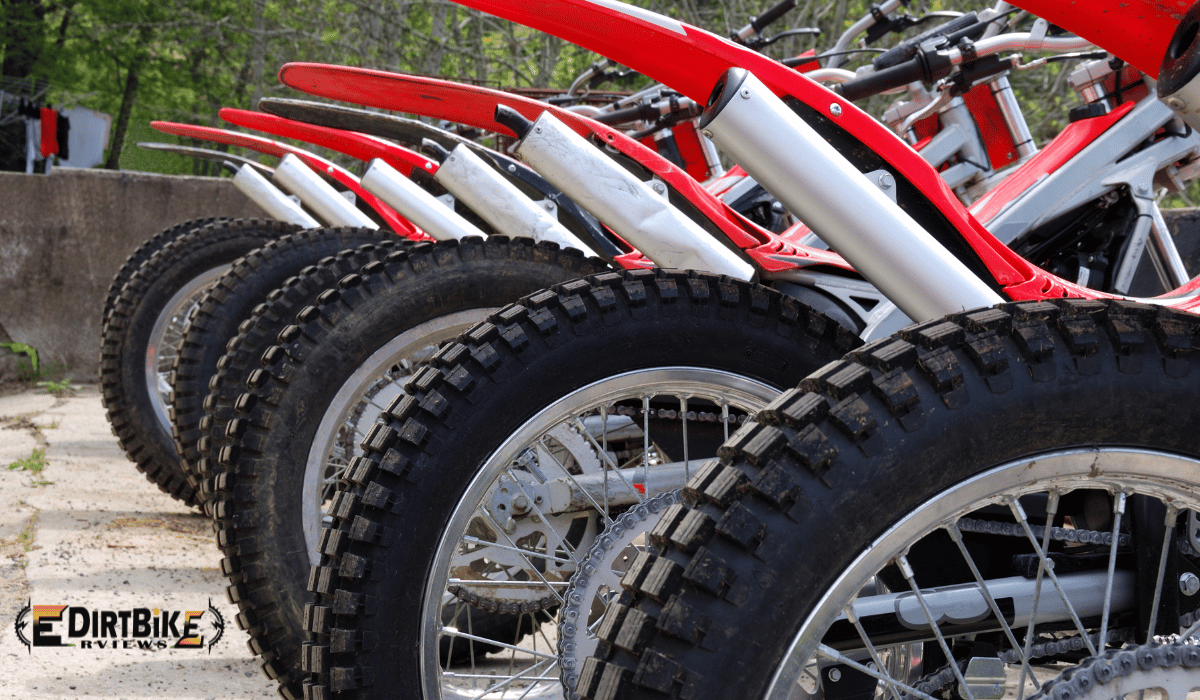

Choosing the right tires for your electric dirt bike is a decision that significantly influences both performance and safety. Tires are the sole contact point between the bike and the ground, playing a pivotal role in how the bike handles various terrains, responds to rider inputs, and performs under different riding conditions. This selection process becomes even more critical with electric dirt bikes, where the unique characteristics of electric power delivery can affect tire wear and performance.
Table of Contents
Selecting the Right Tires for Electric Dirt Bikes
The right tires can transform the riding experience, offering improved traction, stability, and confidence on the trail. Electric dirt bikes, known for their instant torque and consistent power output, require tires that can handle the immediate force and provide adequate grip to efficiently transfer this power into forward motion. The selection is not just about the tire’s ability to endure the power but also its compatibility with the bike’s design and the rider’s style, ensuring that the bike’s capabilities are fully utilized.
Impact of Tires on Performance and Safety
The impact of tires on an electric dirt bike’s performance is profound. Well-chosen tires enhance handling, allowing for sharper turns, better control of technical sections, and more effective braking. They can also reduce the risk of slippage and accidents, particularly in challenging weather or rugged terrain, safeguarding the rider. On the safety front, the right tires lessen the wear on the bike’s components, promote longer battery life by requiring less power to overcome rolling resistance, and generally contribute to a more stable and predictable ride.
Selecting the right tires for an electric dirt bike is crucial to ensuring optimal performance and safety. The choice should be informed by understanding how different tires interact with electric bike dynamics, the intended riding environment, and the rider’s preferences and skills. With the appropriate tires, riders can maximize their enjoyment and control, making every ride safer and more satisfying.
Understanding Tire Basics
Types of Dirt Bike Tires and Their Characteristics
Dirt bike tires come in various types, each designed to perform best under specific conditions:
- Knobby Tires: Characterized by large, spaced-out knobs, these tires offer excellent traction on soft, muddy, or loose surfaces. The knobs dig into the terrain, providing a grip that is essential for off-road riding.
- Intermediate Tires: These are the all-rounders of dirt bike tires, featuring medium-sized knobs with closer spacing. They perform well on various terrains, from soft dirt to hard-packed trails.
- Hard Terrain Tires: Designed for riding on hard, rocky, or compacted surfaces, these tires have smaller, tightly spaced knobs. They offer a larger contact area with the ground, enhancing grip on hard surfaces.
Tire Size and Its Implications for Riding
The size of the tire, typically denoted by width and diameter measurements, affects the bike’s handling and performance. Larger tires may provide better traction and stability due to a larger contact patch with the ground but can also increase rolling resistance, affecting acceleration and battery efficiency. Conversely, smaller tires might offer quicker handling and less rolling resistance but could reduce stability and traction.
Tread Patterns and Terrain Compatibility
The tread pattern on a dirt bike tire plays a crucial role in determining its suitability for different terrains:
- Mud Treads: Designed with wide-spaced, large knobs to prevent mud from clogging, these treads are ideal for wet and muddy conditions, allowing the tire to penetrate the surface and find traction.
- Sand Treads: These tires have a paddle-like design, optimal for loose, sandy terrains where the wide-spaced knobs help in creating a scooping action for better propulsion.
- Rocky Treads: Featuring smaller, closer-spaced knobs and often made of more complex rubber compounds, these tires are designed to grip onto rocky surfaces and resist puncture or damage from sharp edges.
In summary, understanding the basics of dirt bike tires, including the types, sizes, and tread patterns, is essential for selecting the right tire for your electric dirt bike. The choice should align with the typical riding conditions and personal riding style to ensure optimal trail performance, safety, and enjoyment.
Special Considerations for Electric Dirt Bikes
How Electric Dirt Bike Performance Influences Tire Choice
Electric dirt bikes exhibit characteristics that distinctly influence tire selection. Electric motors’ instant torque and continuous power delivery can lead to faster tire wear, especially if the tires are not designed to handle such forces. The acceleration characteristics of electric bikes mean that tires need to have excellent traction to prevent slipping and to utilize the motor’s power effectively. Additionally, since electric dirt bikes often have a heavier build due to the battery, choosing tires that can support the additional weight without compromising performance is crucial.
Durability and Wear Considerations for Electric Bikes
The durability of tires on electric dirt bikes is a significant consideration due to the unique demands of electric propulsion. Tires must be robust enough to withstand the constant torque and be made of compounds that resist wear from the electric motor’s immediate power output. The regenerative braking standard in electric dirt bikes also affects tire wear patterns, potentially causing the rear tire to wear down differently than on a gas-powered motorcycle. Therefore, when selecting tires for an electric dirt bike, it’s essential to consider those explicitly designed for electric or high-performance vehicles, as they are more likely to offer the durability and wear characteristics suited to the bike’s performance profile.
In summary, the performance attributes of electric dirt bikes require careful consideration when choosing tires. The right tires for an electric dirt bike should accommodate the machine’s power and weight and offer durability and wear characteristics that align with the unique aspects of electric biking. This careful selection ensures sustained performance and enhances the overall riding experience.
Selecting Tires for Different Riding Conditions
Tires for Muddy and Wet Conditions
When riding an electric dirt bike in muddy and wet conditions, tires with deep, wide-spaced knobs are ideal. These tread patterns help clear mud quickly and prevent the tire from clogging, maintaining traction in slippery conditions. The knobs’ depth ensures that the tire can penetrate the surface layer of mud to reach firmer ground beneath, providing better grip. Tires designed for wet conditions often have softer rubber compounds to enhance grip on slick surfaces.
Tires for Sandy or Loose Terrain
In sandy or loose terrain, where flotation and stability are critical, tires with a broader profile and flexible knobs are preferable. These features allow the tire to float over the sand rather than digging in, preventing the bike from bogging down. The flexible knobs adapt to the shifting sands, providing a larger contact area and improving traction. The tire’s construction should be durable enough to withstand the abrasive nature of sand, which can quickly wear down the tread.
Tires for Rocky or Hard-Packed Trails
Riding on rocky or hard-packed trails requires tires with solid sidewalls and dense, less pronounced tread patterns. These characteristics prevent punctures from sharp rocks and provide a stable ride on hard surfaces. The tread should offer enough grip to handle the terrain’s irregularities while being smooth enough to maintain contact with the ground. Hard compound tires are typically used in these conditions as they are more resistant to wear and tear and provide better stability at higher speeds.
In conclusion, selecting the right tires for specific riding conditions is crucial for enhancing the performance and safety of an electric dirt bike. To ensure optimal traction, stability, and durability, the tire choice should be based on the terrain’s nature, whether muddy, sandy, or rocky. By matching the tires to the expected riding conditions, riders can maximize their electric dirt bike’s capabilities and enjoy a safer, more satisfying experience on the trails.
Maintenance and Care for Dirt Bike Tires
Regular Inspection and Maintenance Routines
Proper tire maintenance is essential for ensuring the safety and performance of your electric dirt bike. Regular inspections should be part of your maintenance routine. Check for signs of wear, such as tread depth reduction, and look for damage like cuts, punctures, or embedded objects. Tire pressure should be checked before each ride, as incorrect pressure can affect the bike’s handling, increase tire wear, and potentially lead to tire failure.
Rotating the tires periodically can promote even wear, especially if one tire tends to wear down faster than the other due to the bike’s weight distribution or riding style. Cleaning the tires and removing debris from the treads after rides can also extend their life and prevent premature wear.
When to Replace Your Dirt Bike Tires
Knowing when to replace your dirt bike tires is crucial for maintaining optimal performance and safety. Key indicators for replacement include:
- Tread Wear: If the tread depth exceeds the manufacturer’s recommended limit, it’s time for a new tire. Worn treads compromise the tire’s grip and can significantly affect the bike’s handling, especially in adverse conditions.
- Age and Condition: Over time, tires degrade due to exposure to elements, even if they’re not used frequently. Cracks, hardening, or noticeable performance decline are signs that the tires need replacing.
- Damage: Any signs of severe damage, like deep cuts, punctures, or sidewall bulges, indicate that a tire needs to be replaced immediately to avoid the risk of blowouts or accidents.
Regular maintenance and timely tire replacement are vital for ensuring the performance and safety of your electric dirt bike. By keeping a close eye on the condition of your tires and addressing any issues promptly, you can enjoy a reliable and safe riding experience.
Personal Insights on Tire Selection for Electric Dirt Bikes
Experiences with Different Tires in Various Conditions
Through years of riding and testing various electric dirt bikes, I’ve learned that tire selection can dramatically alter the bike’s performance and the rider’s experience. For instance, while navigating muddy trails, tires with aggressive tread patterns provided the necessary grip to power through without getting stuck. In contrast, when riding on sandy dunes, wider tires with a paddle-like design offered the flotation needed to glide over the surface rather than digging in.
One particular experience that stands out was riding with a set of high-performance tires on rocky terrain. The tires’ reinforced sidewalls and specific tread design provided exceptional stability and traction, making a noticeable difference in handling sharp rocks and hard-packed paths. This experience underscored the importance of choosing tires specifically designed for the terrain and conditions of the ride.
Recommendations Based on Riding Style and Bike Specifications
Selecting the right tires for your electric dirt bike involves considering your riding style and the bike’s specifications. Tires with durable construction and aggressive tread patterns are essential for aggressive riders who push their bikes to the limits on challenging terrains. These riders should look for tires that can withstand high torque and provide excellent traction in various conditions.
Conversely, a less aggressive tread pattern might be more appropriate for casual riders or those using their bikes primarily on smooth trails, offering a balance between grip and riding comfort. Additionally, the weight and power output of the electric dirt bike should influence tire choice. Heavier and more powerful bikes require tires that can handle the extra load and power, emphasizing the need for durability and robustness.
In conclusion, my experiences have taught me that there is no one-size-fits-all answer to tire selection for electric dirt bikes. Instead, the best choice depends on careful consideration of the riding conditions, personal riding style, and the bike’s specific capabilities and characteristics. With the right tires, riders can enhance the performance and enjoyment of their electric dirt biking adventures.
Frequently Asked Questions (FAQs)
What size tires are best for an electric dirt bike?
The best tire size for an electric dirt bike depends on the bike’s design, intended use, and rider preference. Generally, larger tires provide better stability and are more capable of handling various terrains, making them suitable for off-road conditions. However, smaller tires might offer more agility and faster acceleration. When selecting tire size, it’s essential to refer to the bike manufacturer’s recommendations and consider the type of terrain you plan to ride on.
Do e-bikes require special tires?
While electric dirt bikes don’t necessarily require special tires, it’s advisable to choose tires that can withstand the unique demands of electric propulsion, such as instant torque and increased weight. Tires designed for electric bikes often have reinforced structures to handle the additional stress and provide better durability and performance.
Do I need ebike-specific tires?
Using ebike-specific tires can be beneficial due to their optimized design for electric bikes’ weight and power output. These tires usually feature more durable materials and construction to cope with electric dirt bikes’ higher torque and speeds. While not mandatory, ebike-specific tires can enhance the performance and safety of your ride.
How often should I replace the tires on my electric dirt bike?
Tire replacement frequency on an electric dirt bike depends on usage, terrain, and tire quality. Regularly inspect your tires for wear and damage, and replace them when the tread depth is below the recommended level or if there are signs of significant wear, damage, or aging. Active riders might need to replace their tires once a season or more, depending on the riding conditions.
These FAQs cover the essential aspects of tire selection and maintenance for electric dirt bikes, guiding riders in making informed decisions to optimize their bike’s performance and safety.
Conclusion
Choosing the right tires for an electric dirt bike is a critical decision that significantly impacts the bike’s performance, safety, and overall riding experience. This comprehensive discussion has highlighted the factors riders must consider, including tire size, tread pattern, terrain compatibility, and whether to opt for e-bike-specific tires.
Recap of Key Points on Choosing the Right Tires
- Tire Size and Type: Selecting the appropriate size and type of tire for your electric dirt bike is essential for optimal performance and handling. Your choices will vary based on terrain and your personal riding style.
- Tread Patterns: The tread pattern should match the riding conditions you most frequently encounter, whether mud, sand, rocky trails or hard-packed dirt paths.
- Durability and Performance: Considering the unique demands of electric dirt bikes, such as higher torque and potentially heavier weights, it’s advisable to choose tires with enhanced durability and performance.
The Significance of Tire Selection in Enhancing the Electric Dirt Biking Experience
The right tires can transform an electric dirt bike ride from good to exceptional. They ensure better traction, improved stability, and a safer riding experience, allowing riders to fully exploit their electric bikes’ capabilities. The silence and power of electric dirt biking, combined with the perfect tire choice, can elevate the adventure, allowing riders to confidently tackle diverse terrains and enjoy the journey to its fullest.
In summary, tire selection is a fundamental aspect of electric dirt bike preparation that should not be overlooked. With the right tires, riders can enhance their electric dirt biking experience, ensuring each ride is as thrilling, safe, and satisfying as possible. By understanding and applying this article’s insights, riders can make informed decisions that optimize their bike’s performance and suit their riding preferences.
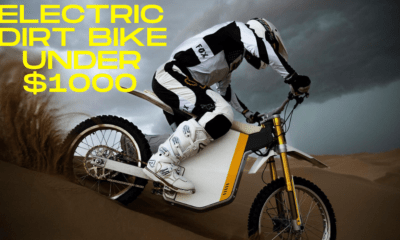
 Electric Dirt Bike For Kids2 years ago
Electric Dirt Bike For Kids2 years agoElectric Dirt Bikes Under $1000: Your Ultimate Guide to Affordable Off-Road Adventure
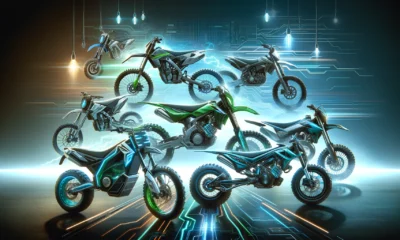
 Electric Dirt Bike For Adults2 years ago
Electric Dirt Bike For Adults2 years agoTop 11 Electric Dirt Bikes for Adults in 2024: Unleashing the Future of Off-Road Adventure
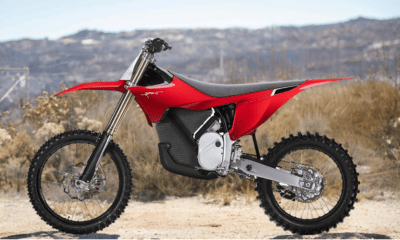
 Electric Dirt Bike For Adults2 years ago
Electric Dirt Bike For Adults2 years agoUnleashing Power and Innovation: The Stark Varg Electric Dirt Bike Reviewed
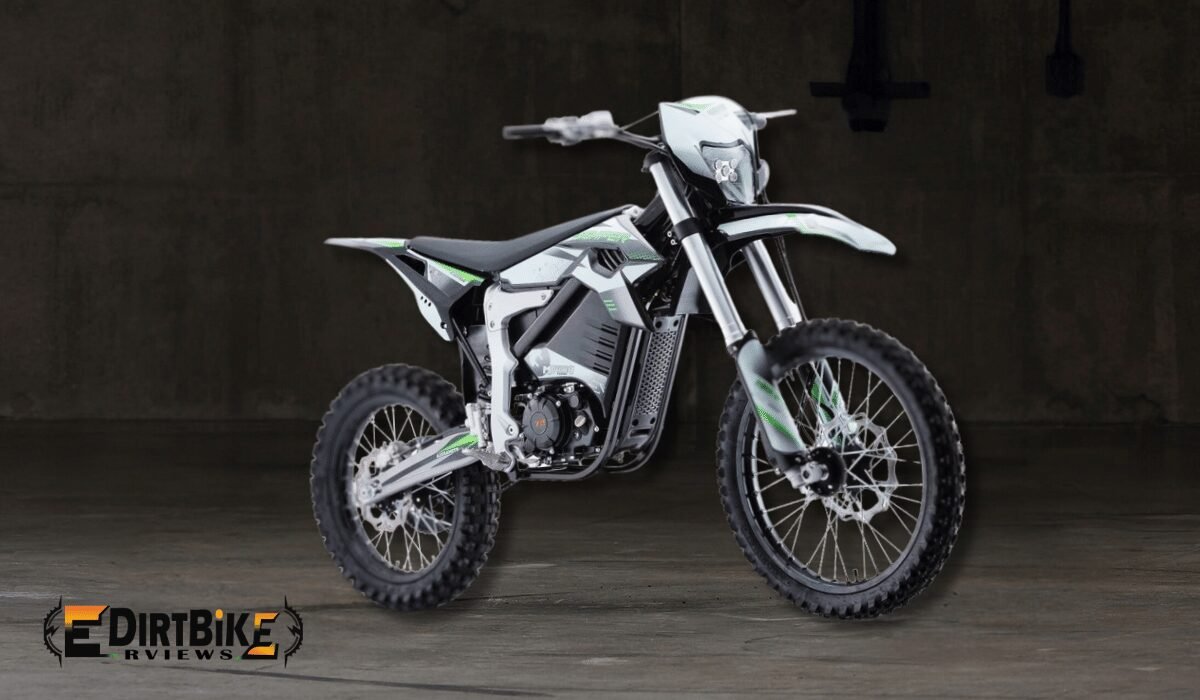
 Electric Dirt Bike For Adults2 years ago
Electric Dirt Bike For Adults2 years agoUnleashing the Thrill: MotoTec Venom 72V 12000W Electric Dirt Bike Review
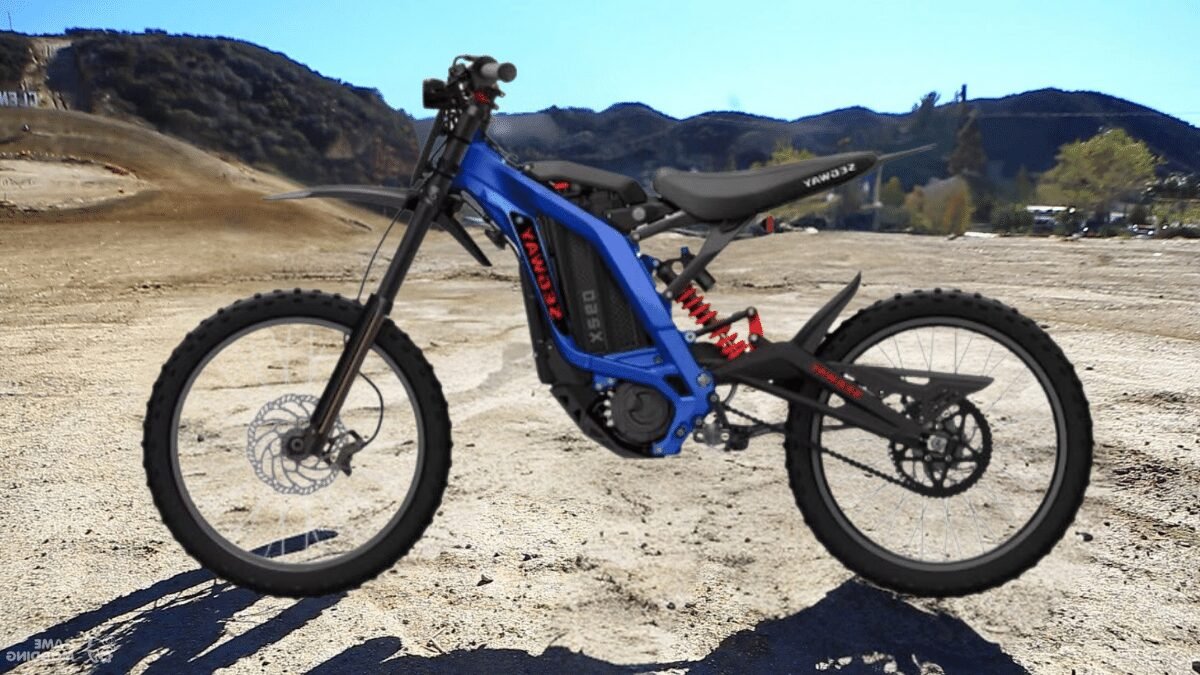
 Electric Dirt Bike For Adults2 years ago
Electric Dirt Bike For Adults2 years agoUnveiling the Segway Dirt eBike X260: Power, Performance, and Adventure
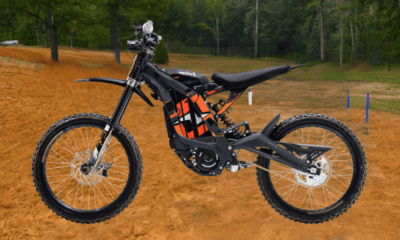
 Electric Dirt Bike For Adults2 years ago
Electric Dirt Bike For Adults2 years agoConquering Trails with the Sur-Ron Light Bee X: A Comprehensive Review
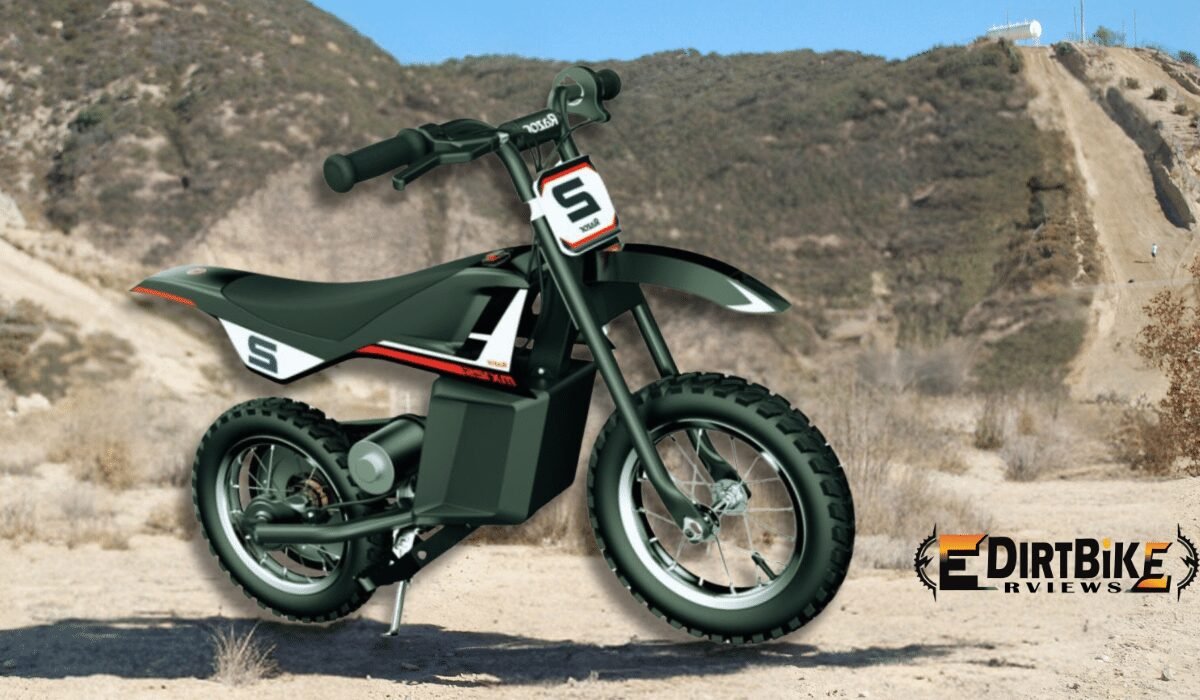
 Electric Dirt Bike For Kids2 years ago
Electric Dirt Bike For Kids2 years agoRazor MX125 Electric Dirt Bike Review: The Ideal Starter Bike for Kids
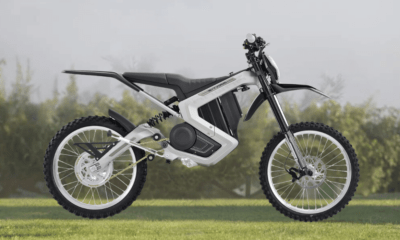
 Electric Dirt Bike For Adults2 years ago
Electric Dirt Bike For Adults2 years agoUnleashing the Power of the Rawrr Mantis: The Ultimate Electric Dirt Bike Experience


